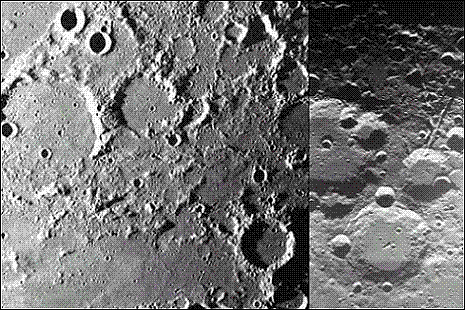The images provided mission scientists with definitive confirmation that the spacecraft's all-important Amie camera was working. The team of scientists operating the spacecraft plans to build a detailed map of the moon's surface

Right: SMATR-1's incredible photography capability. Left: Another demonstration of this ability - the Munches Crater near the lunar zero longitude. (Photo: European Space Agency, Space-X, Space Exploration Institute)
Smart-1 is the first European spacecraft to the Moon
The European spacecraft Smart-1 recently transmitted close-up images of the moon showing the landscape of craters in incredible detail.
Smart-1 entered lunar orbit on November 15, 2004 and has spent the last two months spiraling around the moon, the closest it has come since the Apollo manned landings, and engineers have been testing its instruments. The images provided mission scientists with definitive confirmation that the spacecraft's all-important Amie camera was working. The team of scientists operating the spacecraft plans to build a detailed map of the moon's surface.
The first four days after Smart-1 was captured by the moon's gravity were critical to the operation. The spacecraft entered an unstable orbit and this could have caused it to escape the moon's gravity or, God forbid, crash on its surface. Because of this, the spacecraft's ion engine was turned on again to stabilize the entry into lunar orbit.
The images were taken between December 29, 2004 and January 3, 2005 with the ion engine being shut down occasionally to allow scientists to make the observations. Now the engine is completely turned off and this allows the team members to perform a medium resolution survey of the moon - while taking advantage of good lighting conditions. The team also plans to incorporate high-resolution observations from low latitudes into the map.
The images are the first proof that the Amie camera is still working well in lunar orbit," said the principal investigator operating the instrument, Jean-Luc Josset) of Space-X.
